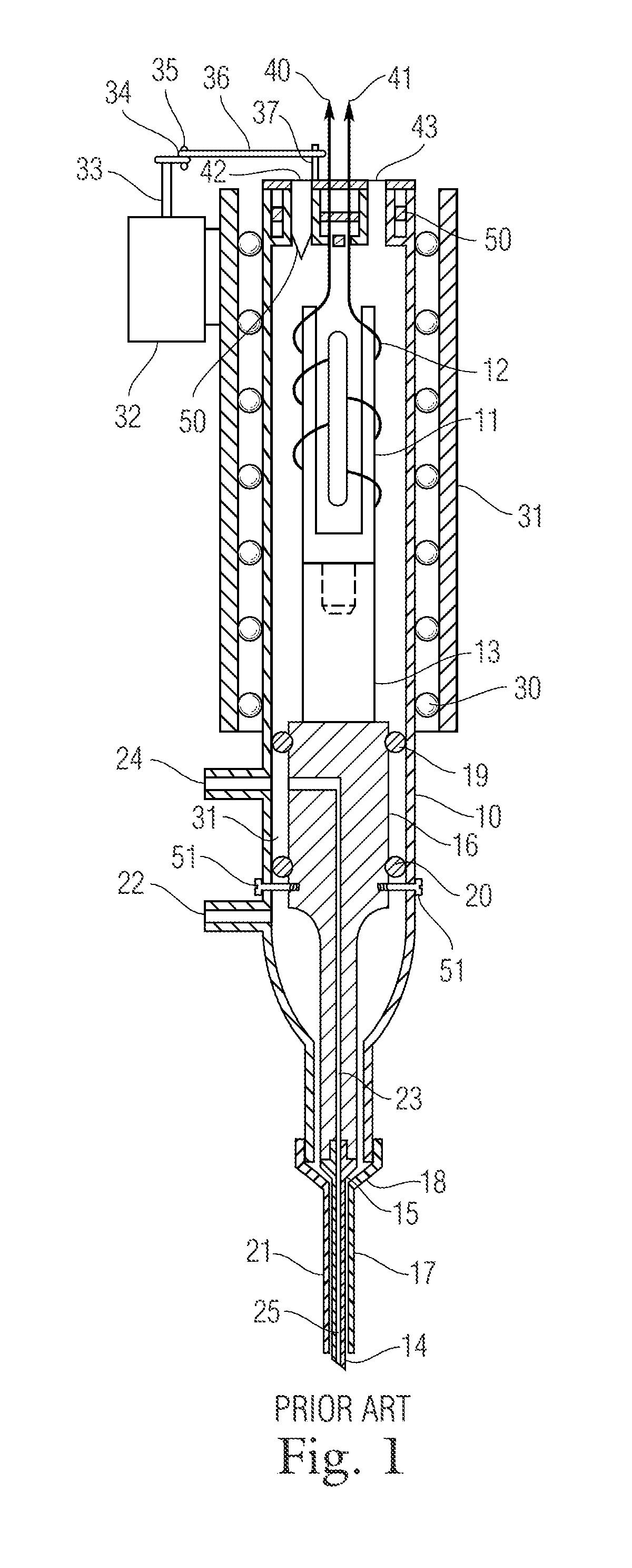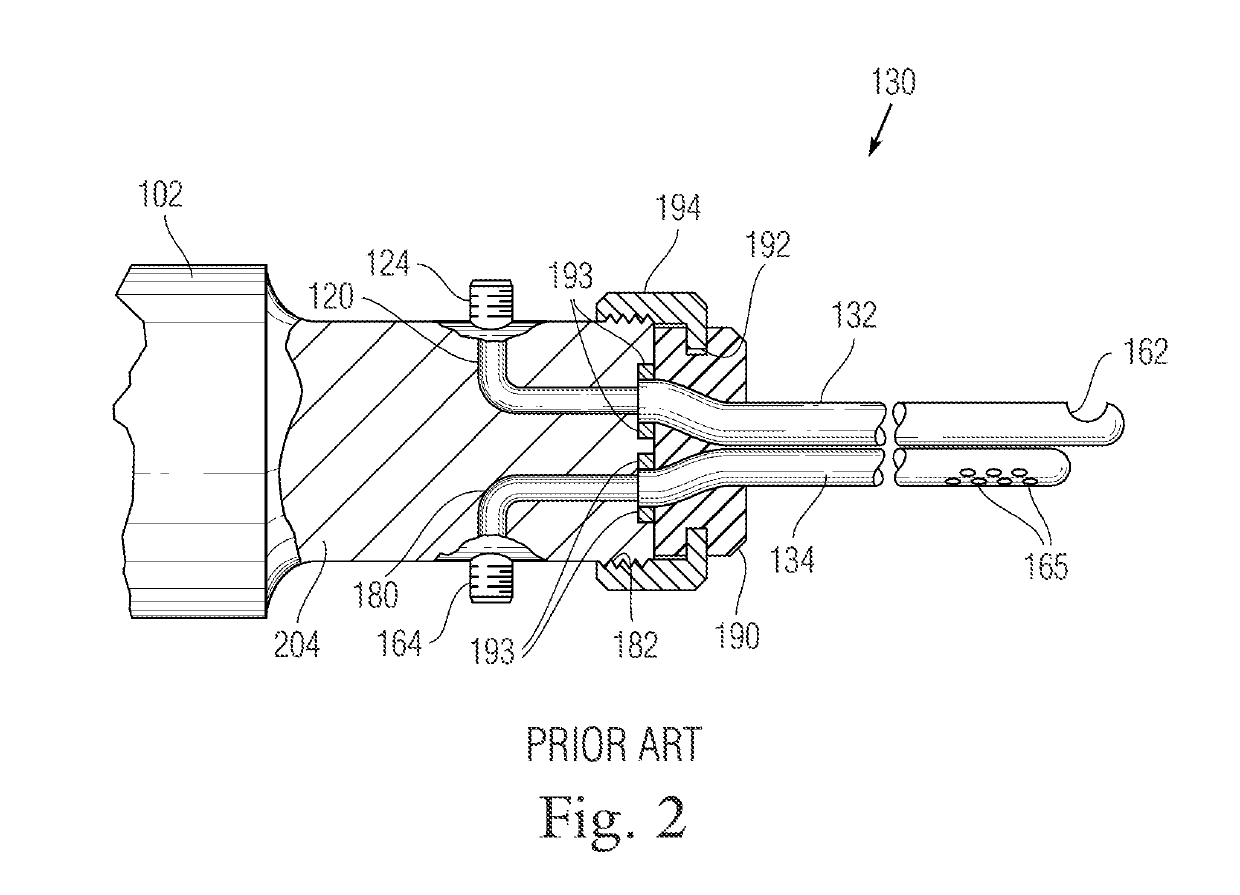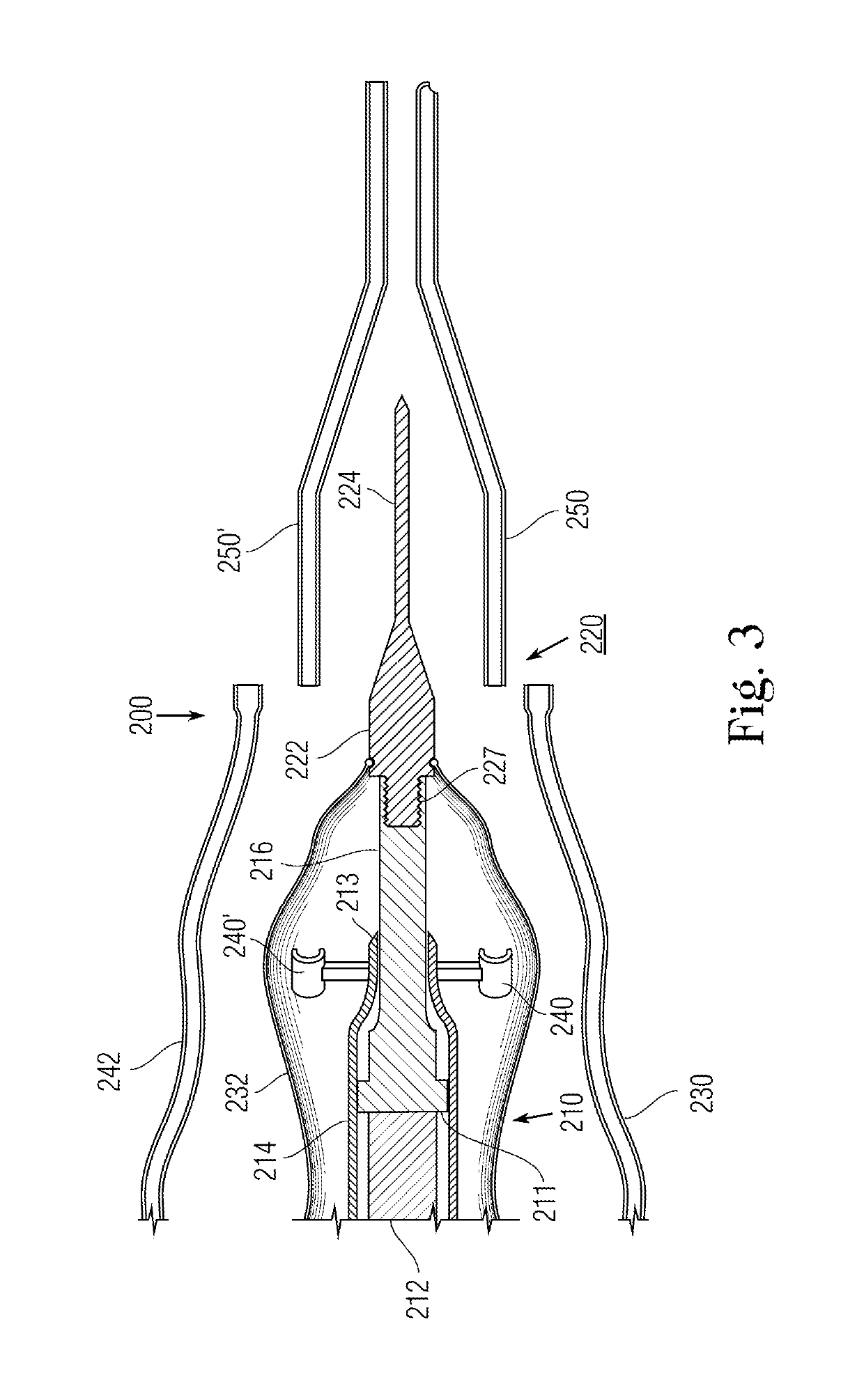Dual lumen surgical hand-piece with ultrasonic knife
a technology of hand-pieces and ultrasonic knives, which is applied in the field of hand-pieces for surgery, can solve the problems of not having ultrasonic vibration capability, unable to be sure that all tissue has been broken up, and subjecting patients to increased possibilities of infection and trauma, and achieves the effect of less expensive and easy manufacturing of work tips
- Summary
- Abstract
- Description
- Claims
- Application Information
AI Technical Summary
Benefits of technology
Problems solved by technology
Method used
Image
Examples
first embodiment
[0035]FIG. 3 shows an exploded view of a handpiece 200 according to an illustrative first embodiment of the present invention. This hand piece has an ultrasonic vibration part 210 connected to a disposable work piece 220. The vibration part has a housing 214. A transducer 212 is provided in part 210 for generating ultrasonic linear mechanical vibrations upon excitation with an alternating-current electrical signal. The transducer is supported within the housing 210 by flanges 211. A metal connecting body 216 having a reduced diameter distal end portion is attached to the transducer 212. The connecting body forms an acoustic impedance transformer for conveying the longitudinal vibrations of the transducer 212 for application to the operative working tip 220 connected to the distal end of the connecting body 216. Further, the housing has a part 213 that engages the connecting body 216 at a null point in its vibration to provide further support.
[0036]The work tip 220 has a hub 222. In ...
second embodiment
[0043]As a second embodiment and as shown in FIG. 5A, the bands 260 can be replaced with a plastic sleeve 226 that surrounds the hub and knife. Its proximal end is larger to accommodate the hub. This larger end is reduced in size toward its distal end so as to form about the knife. As a result, a relatively uniform channel 225 is created between the inner surface of the outer shell 226 and the combination hub and knife. The channel 225 extends from the distal end of the work piece 220, but is blocked by O-ring 223 at the end of the sleeve 226. This O-ring also keeps fluid from the surgical site from traveling along the knife and exiting the work tip beyond the hub. Also, it tends to isolate the vibration of the knife from the structure of the tubes 250, 250′. Basically the tube holders 240, 240′ are fastened to the housing 214, which is stationary. Therefore the holders are relatively stable. The holders engage rigid tubes 250, 250′ so they are stable with respect to the knife which...
third embodiment
[0045]A third embodiment shown in FIG. 6A has tubes 250, 250′ located inside a sleeve 226′. These tubes penetrate the sleeve distal of an O-ring 223. Rather than being circular, like that in FIG. 5A, the tube 250′ inside the sleeve 226′ has a semicircular shape. On the other hand, tube 250 has a circular shape. Both of these tubes are on opposite sides a channel 225 in which the vibration knife is located. As with the design of FIG. 5A, the proximal end of channel 225 is blocked by O-ring 223.
PUM
 Login to View More
Login to View More Abstract
Description
Claims
Application Information
 Login to View More
Login to View More - R&D
- Intellectual Property
- Life Sciences
- Materials
- Tech Scout
- Unparalleled Data Quality
- Higher Quality Content
- 60% Fewer Hallucinations
Browse by: Latest US Patents, China's latest patents, Technical Efficacy Thesaurus, Application Domain, Technology Topic, Popular Technical Reports.
© 2025 PatSnap. All rights reserved.Legal|Privacy policy|Modern Slavery Act Transparency Statement|Sitemap|About US| Contact US: help@patsnap.com



